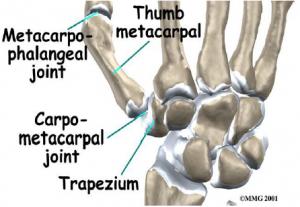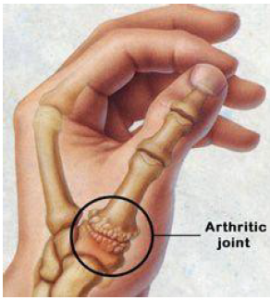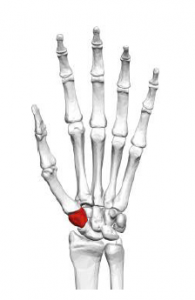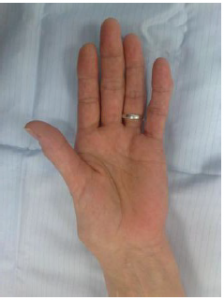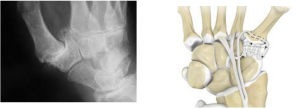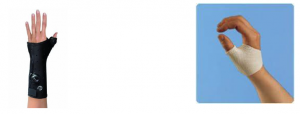Thumb Arthritis
What is thumb arthritis?
It is degeneration of the joint at the base of the thumb metacarpal. It usually is the trapezium/metacarpal joint (TMC), but can also be the joint below as well.
About Arthritis
Thumb arthritis is caused when cartilage wears away from the ends of bones that form joints. It is most common to occur with aging. Some symptoms of arthritis are severe pain, swelling, decrease in strength, and decrease in motion. You should see a doctor if you have non-stop swelling stiffness or pain in joint/bone. Arthritis can easily be treated with a combination of medication and splints. But severe arthritis can involve surgery.
Who gets thumb arthritis?
Basal joint arthritis of the thumb is extremely common. It usually occurs in women after the age of 45 or men after the age of 60. It can be isolated or in conjunction with other hand/wrist arthritis. There is often a family history of arthritis. It is not work-related, although doing any job will be hard with thumb arthritis. Rarely an old fracture can cause thumb arthritis.
What are the symptoms of thumb arthritis?
Pain at the thumb junction with the wrist upon pinching is common. Often there may be deformity of the wrist with loss of the web space between the thumb and index finger.
How do we treat thumb arthritis?
Treating thumb arthritis is about controlling pain. Thumb arthritis has usually progressed for years before anyone seeks treatment. There is no prevention or preventative treatment for arthritis. In addition, there is no benefit for early surgical intervention. Initial treatments consist of bracing and periodic steroid injections. There are no exercises that would help thumb arthritis.
When bracing and steroid injections no longer help, surgical treatment can be very successful. The decision to operate is made by the patient. The trapezium is removed and a tendon is usually placed in the space that once held the trapezium. The deformity is usually corrected at the time of
surgery. If a patient has a significant “Z” deformity, they may require a fusion of the joint above the surgery. This is uncommon.
After surgery, it takes around six to eight weeks for patients to recover then, early movments will take place. They will usually go through a progression of smaller splints and an increasing range of motion. The full process of recovery takes about three months.
At six weeks normal activities are allowed. Grip strength can take longer to return to normal. Supervised hand therapy may be required for optimal function. Decisions on hand therapy are made post operatively based on how well the hand and wrist are moving.

